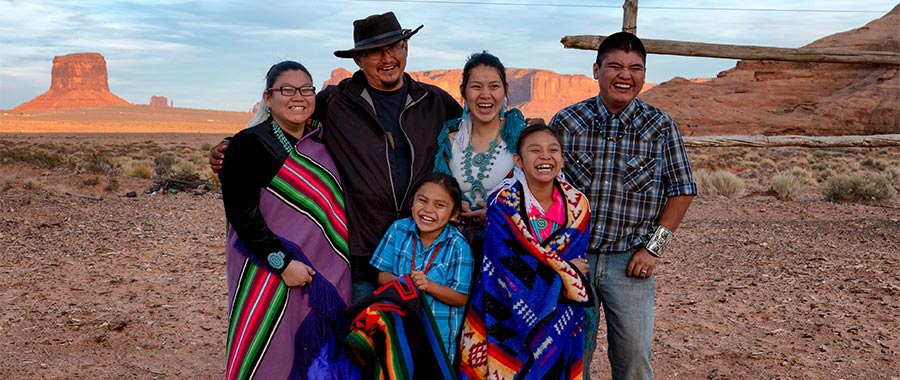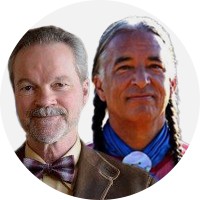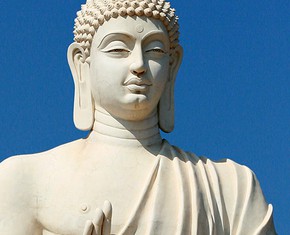The views expressed in our content reflect individual perspectives and do not represent the authoritative views of the Baha'i Faith.
The Baha’i principle of “unity in diversity” includes cultural diversity, too — which means that all people have the right to their unique cultural identity, now considered a human right under international law.
So let’s continue our ongoing conversation with Kevin Locke about the Indigenous messengers of God, with the idea of cultural diversity in mind.
Q: Kevin, in Part 43 of this series, you cited this excerpt from The Prosperity of Humankind, an official statement written in 1995 by the Baha’i International Community:
The principle of collective trusteeship creates also the right of every person to expect that those cultural conditions essential to his or her identity enjoy the protection of national and international law. Much like the role played by the gene pool in the biological life of humankind and its environment, the immense wealth of cultural diversity achieved over thousands of years is vital to the social and economic development of a human race experiencing its collective coming-of-age. It represents a heritage that must be permitted to bear its fruit in a global civilization. On the one hand, cultural expressions need to be protected from suffocation by the materialistic influences currently holding sway. On the other, cultures must be enabled to interact with one another in ever-changing patterns of civilization, free of manipulation for partisan political ends. – “The Prosperity of Humankind,” Baha’i International Community Office of Public Information, Haifa. https://www.bic.org/statements/prosperity-humankind.
This important statement supports and validates everything that your mother Patricia Locke stood for, doesn’t it?
A: Yes, but much more than that! In my book, Arising, Chapter 5, I wrote about Patricia Locke’s activism, including her immediate, as well as long-term, goals and objectives:
At this time, she had so much going on in her life – most significantly, her activism to improve educational opportunities for Indigenous people; to support their cultural, spiritual, and linguistic heritage; and to eliminate discriminatory practices toward them.
Note that the Baha’i International Community refers to the “protection of national and international law.” My mother knew that national law, standing alone, may not be enough. The greater protection, in the long run, may be cultural protection and preservation under international law, to which national law should conform. Patricia Locke, therefore, was not only an activist at local and national levels, but at the international level as well.
Q: Some of the language in the Baha’i International Community’s remarkable statement appears to echo the UNESCO “Universal Declaration on Cultural Diversity” declaration, which says, in part:
IDENTITY, DIVERSITY AND PLURALISM
Article 1 – Cultural diversity: the common heritage of humanity
Culture takes diverse forms across time and space. This diversity is embodied in the uniqueness and plurality of the identities of the groups and societies making up humankind. As a source of exchange, innovation and creativity, cultural diversity is as necessary for humankind as biodiversity is for nature. In this sense, it is the common heritage of humanity and should be recognized and affirmed for the benefit of present and future generations.
Article 2 – From cultural diversity to cultural pluralism
In our increasingly diverse societies, it is essential to ensure harmonious interaction among people and groups with plural, varied and dynamic cultural identities as well as their willingness to live together. Policies for the inclusion and participation of all citizens are guarantees of social cohesion, the vitality of civil society and peace. Thus defined, cultural pluralism gives policy expression to the reality of cultural diversity. Indissociable from a democratic framework, cultural pluralism is conducive to cultural exchange and to the flourishing of creative capacities that sustain public life. – “UNESCO Universal Declaration on Cultural Diversity.” http://www.unesco.org/new/fileadmin/MULTIMEDIA/HQ/CLT/pdf/5_Cultural_Diversity_EN.pdf
So Kevin, can you comment on “cultural diversity” and “cultural pluralism”?
A: Chris, would you please clarify your question by first commenting on “cultural pluralism”?
Q: Sure! The term “cultural pluralism” was first coined in a famous conversation, in 1907, at the University of Oxford, after the Harlem Renaissance philosopher and writer Alain Locke (who later became a Baha’i in 1918), posed the question: “What difference does difference make?”
In the ensuing conversation with Jewish philosopher Howard Kallen, the term “cultural pluralism” – more commonly known today as “multiculturalism” – was born. How does that apply to your understanding of the Baha’i idea of unity in diversity today?
A: Chris, let me cite an example that you may be familiar with. In 1969, the National Spiritual Assembly of the Baha’is of Canada published a pamphlet, “The Right to An Identity,” which says, in part:
Our hope is that Canada will be the first nation on earth to give practical force to the most fundamental right of all: the right of every citizen to be what God has made him. Some of the steps which can contribute to such a breakthrough are:
- Recruitment of native Canadians as teachers and teaching assistants.
- Kindergarten and some primary instruction in the native language of the children.
- Development of courses of study covering the entire religious heritage of mankind.
- Involvement of Indian youth in Canada’s overseas aid programs.
- Inclusion of the right to a cultural identity in any civil rights entrenched in the Constitution. – The Canadian Baha’i Community National Office, The Right to An Identity, p. 9.
Note here the proposal for a new constitutional right to be added to the Canadian Constitution! Also, the Baha’i community of Canada recommended the “Development of courses of study covering the entire religious heritage of mankind,” which presumably includes Indigenous Canadian and Indigenous American religions.
Q: Interesting! One way to promote “unity in diversity” is to promote the right to a cultural identity, which includes traditional, indigenous religious heritages as well. Would you agree?
A: Yes, definitely. I like the way the “Cultural Settings” section of the August 21, 1994, International Teaching Centre letter, “Growth of the Cause in Rural Communities” put this concept:
There is a tendency to feel that other peoples’ cultures are less refined than one’s own. This feeling is confirmed when contact with another people is superficial. But whenever those from outside penetrate another culture and discover its depth and subtleties, they develop an attitude of genuine respect for the people. At the most profound depth of every culture lies veneration of the sacred. – The International Teaching Centre, ““Growth of the Cause in Rural Communities,” August 21, 1994.
Societal transformation starts in the heart, and in that heart lies veneration of the sacred. Our series of articles identifies the source of that sacred heart as the holy souls sent from the heavenly Source to edify the lives in those rural communities to whom they appeared.
Q: So is the “right to a cultural identity” something that the Patricia Locke Foundation — a Baha’i-inspired community service initiative — actively promotes?
A: Absolutely. My mom’s favorite Baha’i quote says it best:
O Son of Spirit! The best beloved of all things in My sight is Justice; turn not away therefrom if thou desirest Me, and neglect it not that I may confide in thee. By its aid thou shalt see with thine own eyes and not through the eyes of others, and shalt know of thine own knowledge and not through the knowledge of thy neighbor. Ponder this in thy heart; how it behooveth thee to be. Verily justice is My gift to thee and the sign of My loving-kindness. Set it then before thine eyes. – Baha’u’llah, The Hidden Words, pp. 3–4.
Q: Since this was Patricia Locke’s favorite Baha’i quote, and since the Indigenous population is the most underrepresented in the United States government, certainly the Patricia Locke Foundation must give serious weight to the topic of promoting the right to a cultural/spiritual identity, right?
A: Interestingly, from a Baha’i perspective, there are six Baha’i national jurisdictions in North America: Hawaii, Alaska, Canada, United States, Greenland and Mexico. Two are majority Indigenous heritage: Greenland and Mexico. Territorially, Alaska and Canada are predominantly Indigenous. Hawaii basically couldn’t exist without its Indigenous identity. Only the United States has a collective national amnesia regarding its Indigenous heritage. Consequently, we in the United States have the bounty of being able to work a little harder to create a positive awareness of the Indigenous element of our global heritage.
Q: It’s also heartening to know that the “right to a cultural identity” is recognized and promoted as an independent human right in its own right — as proclaimed and promulgated, under international law, by the UNESCO “Universal Declaration on Cultural Diversity” — independent of whether or not the Baha’i truths and vision are included in that process.
A: This is yet another human right, among many others, that the Baha’i teachings actively support and promote, under the Baha’i watchword: “Human rights are God-given rights,” where respect for secular human rights is intensified by recognizing human rights as sacred.
















Comments
Sign in or create an account
Continue with Googleor